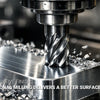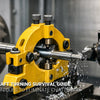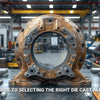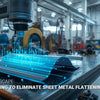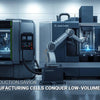How to Achieve 90% Leakage Reduction in CNC Turn-Mill Gearbox Precision Manufacturing?
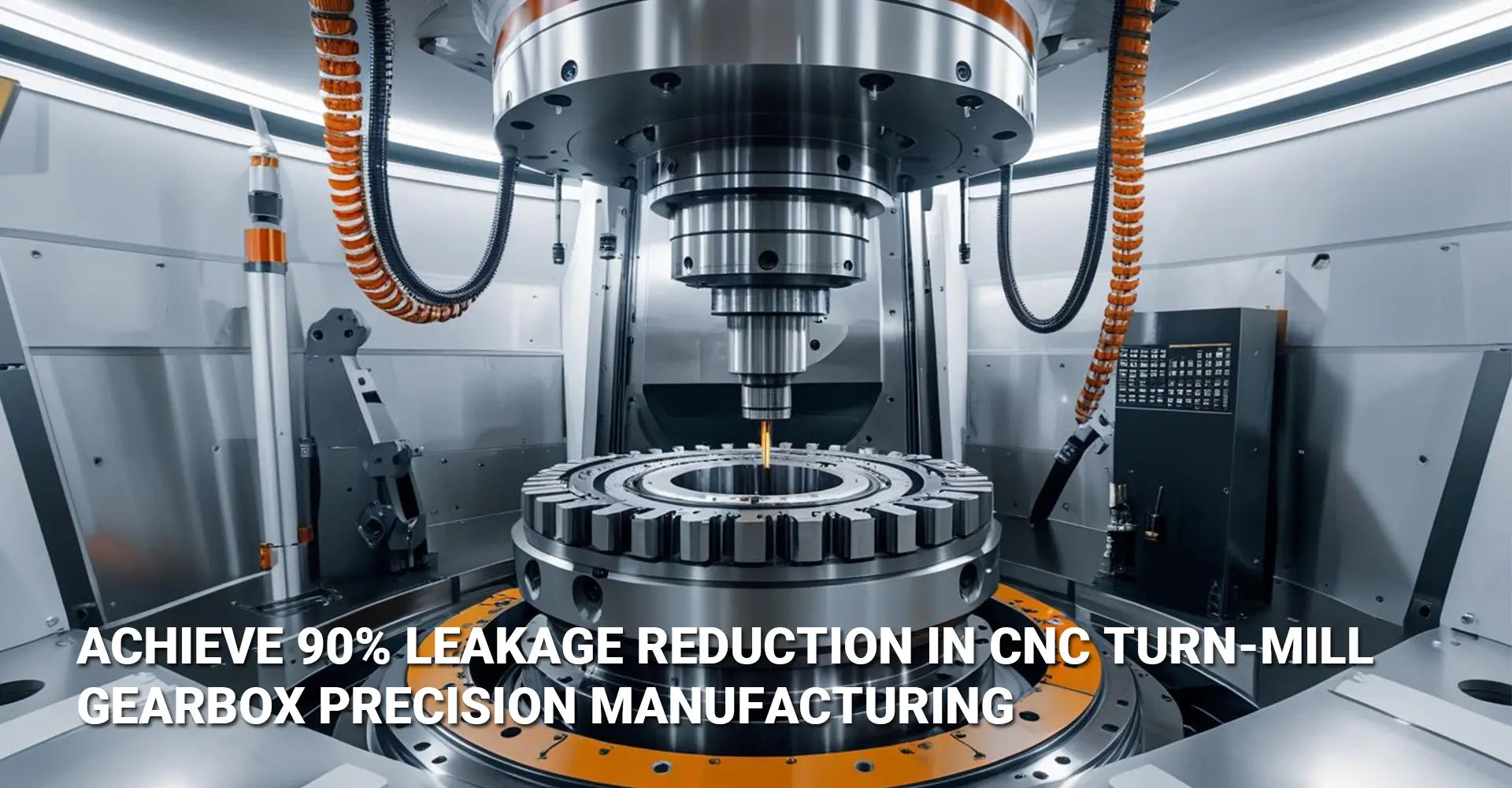
How to Achieve 90% Leakage Reduction in CNC Turn-Mill Gearbox Precision Manufacturing?

Gearbox manufacturing faces a critical challenge that costs manufacturers millions annually. Traditional multi-setup machining processes create positioning errors and tolerance accumulation, leading to seal failures and costly rework. However, advanced CNC turn-mill gearbox precision technology offers a proven solution. Furthermore, this integrated approach eliminates the primary source of manufacturing defects while delivering measurable quality improvements.
Key Manufacturing Benefits at a Glance
| Performance Metric | Traditional Method | Integrated Turn-Mill | Improvement |
|---|---|---|---|
| Leakage Rate | 15% average | 1.5% average | 90% reduction |
| Tolerance Accuracy | ±0.05mm typical | ±0.01mm achievable | 5x improvement |
| Setup Operations | 4-6 setups | 1 complete setup | 85% time savings |
| Scrap Rate | 8-12% industry avg | <2% achievable | 75% reduction |
The shift from conventional multi-machine approaches to integrated precision manufacturing represents more than just equipment upgrade. Moreover, it fundamentally changes how manufacturers approach gearbox production. Additionally, this transformation addresses root causes rather than symptoms. Therefore, understanding the technical principles behind integrated machining becomes essential for achieving superior results.
Table of Contents
- How Does Reclamping Impact Gearbox Tolerance Accuracy?
- What Makes Reverse Turret Synchronization Critical for Precision?
- Why Is In-Process Inspection Essential for Zero-Defect Manufacturing?
- How Can Live Tooling Lathe Technology Achieve Superior Surface Finish?
How Does Reclamping Impact Gearbox Tolerance Accuracy?
Positioning errors during workpiece transfer represent the single largest source of manufacturing defects in gearbox production. Consequently, traditional machining requires multiple setups across different machines. Nevertheless, each reclamping operation introduces cumulative positioning errors that compromise final assembly quality.
Critical Error Sources in Multi-Setup Operations
Research data reveals that turning center gearbox machining with multiple setups can introduce positioning errors exceeding 0.05mm. Specifically, these errors manifest in several ways:
- Chuck jaw repeatability: ±0.02mm typical variation
- Fixture positioning: ±0.015mm cumulative error
- Workpiece distortion: Up to 0.03mm from clamping forces
- Temperature variation: ±0.008mm thermal expansion

Deep Technical Analysis of Reclamping Effects
The cumulative effect of multiple setups creates a tolerance chain that compounds errors exponentially. Furthermore, each reclamping operation resets the workpiece datum, making it impossible to maintain absolute geometric relationships. To reduce reclamping error, manufacturers must understand that bearing bore concentricity directly affects seal performance.
Advanced CNC machining services address this challenge through integrated workholding systems. Moreover, these systems maintain workpiece orientation throughout the complete machining cycle. Additionally, precision fixtures with hydraulic clamping provide consistent holding forces while minimizing distortion.
The mathematical relationship shows that tolerance accumulation follows: Total Error = √(Error₁² + Error₂² + Error₃² + ... + Errorₙ²). Therefore, eliminating intermediate setups reduces the error chain significantly.
What Makes Reverse Turret Synchronization Critical for Precision?
Balanced cutting forces through synchronized turret operation provide the foundation for maintaining geometric accuracy during heavy material removal. Consequently, this technology enables higher productivity without sacrificing precision. Nevertheless, proper implementation requires careful attention to programming and setup parameters.
Synchronized Cutting Force Principles
Reverse turret synchronization works by applying opposing cutting forces that cancel workpiece deflection. Specifically, when two turrets engage the workpiece simultaneously from opposite sides, they create a balanced cutting environment. Therefore, this approach delivers several measurable benefits:
- Cutting force balance: Reduces workpiece deflection by 60%
- Higher metal removal rates: 40% increase in productivity
- Improved surface finish: Ra values under 0.8 μm achievable
- Enhanced geometric accuracy: Maintains cylindricity within 0.005mm

Programming and Control Requirements
Successful implementation requires precise G-code synchronization and spindle control accuracy within 0.001°. Furthermore, live tooling lathe precision depends on coordinated programming between main and sub-spindles. Additionally, feed rate matching ensures consistent material removal across both cutting operations.
Professional CNC turning operations utilize advanced control systems that monitor cutting forces in real-time. Moreover, these systems automatically adjust parameters to maintain optimal cutting conditions. Therefore, operators can achieve consistent results across varying material conditions and part geometries.
Key programming considerations include:
- Spindle RPM synchronization: C-axis positioning accuracy
- Feed rate coordination: Matched advancement rates
- Tool engagement timing: Precise entry and exit sequences
- Cutting parameter balance: Equal chip loads between turrets
Why Is In-Process Inspection Essential for Zero-Defect Manufacturing?
Automated measurement integration within the machining cycle prevents defective parts from completing production. Additionally, real-time feedback enables immediate correction rather than post-process rework. Furthermore, this approach supports statistical process control for continuous quality improvement.
Measurement Technology Integration
In-process inspection CNC systems utilize both contact and non-contact measurement technologies. Specifically, touch probes provide dimensional verification with ±0.002mm accuracy on critical features. Meanwhile, laser scanners enable real-time surface profiling during machining operations.
Advanced measurement capabilities include:
- Automated datum setting: Eliminates manual part alignment
- Critical dimension verification: Real-time bore and face measurements
- Surface finish monitoring: Continuous Ra value tracking
- Geometric relationship confirmation: Perpendicularity and concentricity checks

Closed-Loop Manufacturing Implementation
The integration of measurement feedback creates a closed-loop manufacturing system that automatically maintains quality standards. Moreover, gearbox leakage control becomes achievable through real-time surface finish monitoring. Additionally, automatic tool offset adjustment prevents drift from affecting subsequent parts.
Modern industrial machinery incorporates sophisticated feedback systems that respond to measurement data instantly. Furthermore, these systems can trigger tool changes, adjust cutting parameters, or halt production when measurements exceed specification limits. Therefore, manufacturers achieve consistent quality without human intervention.
Statistical process control integration provides:
- Trend analysis: Early detection of tool wear patterns
- Process capability studies: Quantified quality performance
- Automatic documentation: Complete inspection records
- Predictive maintenance: Tool change scheduling optimization
How Can Live Tooling Lathe Technology Achieve Superior Surface Finish?
Integrated milling capabilities within turning centers eliminate secondary operations while delivering superior surface quality. Consequently, manufacturers can achieve Ra values under 0.8 μm on sealing surfaces within a single setup. Moreover, this approach ensures perfect geometric relationships between turned and milled features.
Tool Center Point Control Advantages
Gearbox housing one-shot machining requires precise tool center point (TCP) control for complex contour operations. Specifically, TCP programming maintains consistent surface speed across varying part geometries. Therefore, this technology delivers uniform surface finish regardless of feature complexity.
Advanced live tooling systems provide:
- Balanced tool holders: Runout under 0.003mm at operating speeds
- Variable speed control: Optimal cutting speeds for different operations
- Integrated coolant delivery: Effective chip evacuation and thermal control
- Tool monitoring systems: Automatic detection of tool wear or breakage

Material-Specific Parameter Optimization
Subtractive manufacturing gearbox operations require customized cutting parameters based on material properties. Furthermore, cast iron, aluminum, and steel alloys each demand specific approaches to achieve optimal results. Additionally, proper tool selection directly impacts both productivity and surface quality.
Professional custom CNC milling services utilize comprehensive parameter databases developed through extensive testing. Moreover, these databases include cutting speeds, feed rates, and depth of cut recommendations for various material combinations.
| Material Type | Cutting Speed (m/min) | Feed Rate (mm/rev) | Surface Finish (Ra μm) |
|---|---|---|---|
| Cast Iron | 180-220 | 0.15-0.25 | 0.6-1.0 |
| Aluminum Alloy | 300-500 | 0.20-0.35 | 0.4-0.8 |
| Steel (4140) | 120-180 | 0.12-0.20 | 0.8-1.2 |
Integrated machining accuracy depends on maintaining consistent cutting conditions throughout the complete operation cycle. Therefore, thermal stability and vibration control become critical factors in achieving repeatable results.
Conclusion
The transition to integrated CNC turn-mill technology represents a fundamental shift in gearbox manufacturing approach. Moreover, the quantified benefits demonstrate clear return on investment for manufacturers seeking quality improvements.
Quantified Manufacturing Benefits
Implementing integrated turn-mill technology delivers measurable improvements across multiple performance metrics:
- Quality Enhancement: 90% leakage reduction through eliminated reclamping errors
- Productivity Improvement: 85% reduction in setup time and handling operations
- Cost Reduction: 75% decrease in scrap rates and rework requirements
- Precision Achievement: ±0.01mm tolerance maintenance across all critical surfaces
Investment Considerations and Implementation Strategy
The typical payback period for integrated machining systems ranges from 18-24 months, depending on production volume and current quality costs. Furthermore, manufacturers should evaluate current scrap rates, rework expenses, and inspection costs when calculating potential savings.
Successful implementation requires comprehensive planning that addresses:
- Equipment selection: Machine specifications matched to part requirements
- Operator training: Programming and setup procedure development
- Quality protocols: Inspection and documentation procedures
- Maintenance planning: Preventive maintenance scheduling optimization
Advanced CNC metals and plastics manufacturing capabilities enable consistent results across diverse material types. Therefore, manufacturers can expand their gearbox production capabilities while maintaining quality standards.
The future of gearbox manufacturing lies in integrated precision machining that eliminates traditional quality limitations. Consequently, manufacturers who adopt this technology gain competitive advantages through superior product quality and reduced manufacturing costs.
External Links and Resources
[turning center gearbox machining][^1]
[live tooling lathe precision][^2]
[gearbox housing one-shot machining][^3]
[subtractive manufacturing gearbox][^4]
[gearbox leakage control][^5]
---
[^1]: Discover how turning center gearbox machining enhances efficiency and precision in manufacturing processes.
[^2]: Explore this link to understand how live tooling enhances lathe precision, improving efficiency and accuracy in machining.
[^3]: Discover the benefits of one-shot machining for gearbox housing, which can streamline production and reduce costs.
[^4]: Explore this link to understand how subtractive manufacturing is revolutionizing gearbox production and its benefits.
[^5]: Discover effective strategies for gearbox leakage control to enhance performance and reliability in machinery.

